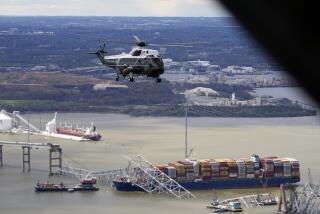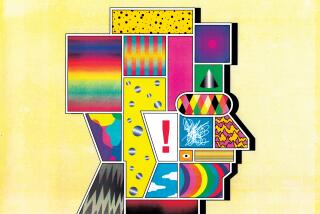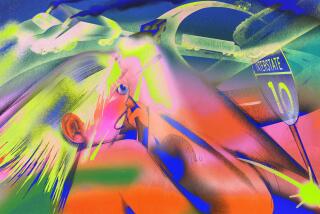Don’t Let Phobias Keep You at Home
The Chesapeake Bay Bridge is a four-mile link between the Baltimore-Washington area and the recreation areas of Maryland’s Eastern Shore. To some travelers driving the East Coast, it’s also a scenic shortcut around the cities. To others it’s a heart-stopper, and they pass it up for the much longer urban route.
These are the drivers who have bridge anxiety. Never mind that more than 23 million vehicles a year cross this bridge. Drivers with severe bridge anxiety are sure they’ll be the ones to drive off the side, stall or have an anxiety attack and freeze a half-mile into the drive. This bridge is a particular trigger because it has no shoulder.
Besides the better-known fear of flying, there are several travel-related phobias that ground people and spoil vacations.
“You name it,” says Judith Willging, a nurse-therapist who is co-director of the Center for Travel Anxiety in Bethesda, Md. She and co-director Jean Ratner, a social worker, have probably heard about every phobia. Besides fear of bridges, Willging says, she and other experts in the field commonly consult with clients hoping to overcome fear of riding the subway or underground airport people-movers and fear of driving in heavy traffic or on mountainous roads.
The good news is that many travel-related fears are simple phobias and easily treated, says R. Reid Wilson, a psychologist in Chapel Hill, N.C., who specializes in the field. Some travel phobics have a history of panic disorder, and they can be more difficult to treat, he adds.
To begin, Willging tries to determine the root of the fear
“Claustrophobia is a big problem in a number of travel-related anxieties,” she says. That’s often the case, for instance, when clients fear boarding elevators or subway-style people-movers.
And some people have the opposite fear, of the wide-openness of the road.
Wilson finds that people who fear highway driving often fear losing control and worry that they will be immobilized by a panic attack. This feeling of intense fear or anxiety can be accompanied by pounding heartbeat, sweating, difficulty breathing and other symptoms.
Drivers with bridge phobias often say they fear driving off into the water, as improbable as that may sound. Some are afraid they won’t be able to get off if they have a panic attack, Willging says.
A single traumatic incident can trigger a travel-related phobia, Wilson says, as can watching a horrible traffic accident or news of an airplane accident that’s broadcast over and over.
Much of the treatment for these travel-related anxieties is patterned after the treatment for fear of flying. Willging teaches relaxation skills, as does Wilson. The goal, he says, is to recognize the feeling of relaxation.
Learning to breathe slowly and in a relaxed fashion is crucial.
Another valuable technique: Stop negative thoughts as soon as they surface and substitute rational thoughts, a process Willging calls “keeping the terror under control.”
Next comes gradual exposure to the objects of fear in an effort to desensitize the client. In the case of bridges, a client might read a coffee-table book on the subject. The point is to see the beauty of the structures and learn a bit about the engineering.
Next, Willging and her client might try driving across a smaller, shorter bridge than the one causing the anxiety. “Or we might go to the Chesapeake Bay Bridge and watch it for a while, so they can become more comfortable just [being] in sight of the bridge.”
Next might come the drive over the feared bridge, either with the therapist or a supportive family member or friend.
(The Chesapeake Bay Bridge fear is no small problem. The Maryland Transportation Authority offers fearful drivers a free tow across.)
The same sort of desensitization that helps bridge phobia can work with travelers who fear taking the subway. Willging took one such client to an above-ground Metro station in Washington. First they just observed the trains going by. Then they took a ride from one above-ground station to another. Then they went one more stop to an underground station. “The first time she tried this she had a panic attack but came out of it,” Willging recalls. Graduation was a solo round trip with Willging waiting at the departure station.
In treating non-flying phobias, Wilson says, it’s easier to break down the desensitization steps. For instance, those with a driving phobia can ride as a passenger, then drive with a friend’s support car directly behind them, then drive with the friend five or six car lengths behind, and finally drive solo.
For more information on phobias and their treatment, see the Web sites of the National Institute of Mental Health, https://www.nimh.nih.gov; Reid Wilson, https://www.anxieties.com; or Judith Willging,https://www.anxietytreatment.org.
Healthy Traveler appears on the second and fourth Sundays of the month. Kathleen Doheny can be reached at [email protected].
More to Read
Sign up for The Wild
We’ll help you find the best places to hike, bike and run, as well as the perfect silent spots for meditation and yoga.
You may occasionally receive promotional content from the Los Angeles Times.






